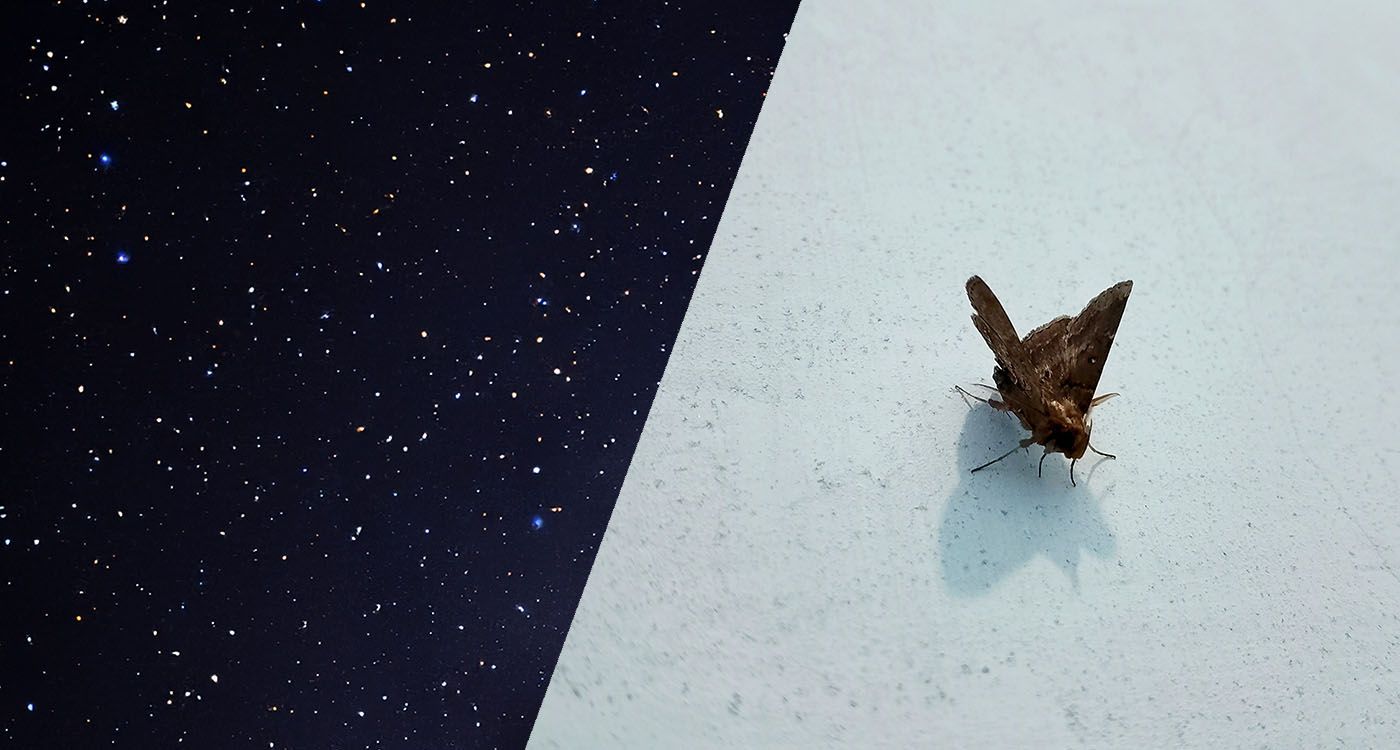
Every year, billions of Bogong moths cross Australia in one of nature’s most mysterious and spectacular migrations. Researchers have now discovered that these insects navigate by the stars, making them the first known insects to use a true celestial compass written into their DNA.
Each spring, in the silence of Australian night, billions of Bogong moths take flight on an extraordinary journey. They travel hundreds of kilometers from their native lands in southeastern Australia to the icy caves of Australian Alps, where they cluster by thousands to spend summer in a protective torpor known as aestivation. In autumn, they return to the plains to reproduce, completing a migratory cycle that has endured for millennia.
But how do these tiny, fragile creatures find their way across vast territories they have never seen? For decades, scientists and naturalists have been fascinated by this mystery. In 2025, an international research team provided an astonishing answer: Bogong moths literally read the night sky, orienting themselves by the stars.
The discovery, published in Nature, marks a first in the insect world. Until now, only birds, seals, and some fish were thought to use the starry sky for long-distance navigation. Researchers found that Bogong moths also possess a stellar orientation system: a celestial compass imprinted in their genetic code. To reach this conclusion, the team used a sophisticated simulator: moths were placed in a controlled environment where realistic images of the night sky were projected. When shown a natural sky map, Bogongs consistently chose the direction corresponding to their migratory route, even with all other cues removed.
The most surprising part came next. When researchers rotated the sky projection by 180 degrees, moths adjusted their course accordingly, proving they weren’t simply following a single light source but recognizing the overall pattern of the stars. Conversely, when shown an artificial sky with stars placed randomly, moths lost their bearings, unable to find north. In a further experiment, even when Earth’s magnetic field was neutralized inside the simulator, moths still oriented correctly under a coherent star map. This proved that their navigation relies not only on magnetism but also on an authentic reading of the heavens.
A Programmed Neural System
The feat of these insects, with brains no bigger than a poppy seed, amazed the scientific community. To understand how the Bogong interprets the sky’s map, researchers recorded neural activity in its visual brain region. They found that some nerve cells fired precisely when the moth was exposed to specific constellations or celestial directions. The animal thus appears to have a neural system preprogrammed to process stellar cues and translate them into navigation commands.
This dual system, using stars when visible and Earth’s magnetic field when the sky is overcast, gives the Bogong remarkable resilience across diverse conditions. Such redundancy, similar to that of migratory birds, explains how these moths can undertake their journey generation after generation without parental guidance or learning: the route is encoded in their DNA.
Yet this astonishing ability is fragile. Climate change, habitat loss, and especially light pollution pose direct threats to the Bogong. Artificial city lights and infrastructure halos disrupt their perception of the night sky, blurring the natural landmarks they rely on for migration. These disturbances compound the steep decline in Bogong populations observed in recent decades. Some experts fear that one day, these moths may no longer complete their ancestral journey, losing touch with an instinct thousands of years old.
This discovery opens a new chapter in the study of animal migration and raises profound questions: Which specific celestial markers do the moths use — the Milky Way, certain constellations, or the general pattern of stars? How does such a tiny nervous system encode and process that information? Research continues, but the Bogong’s achievement is a humbling reminder that, even in the age of GPS and artificial intelligence, nature still holds countless untold secrets.
In the vast Australian night, billions of moths continue their silent flight, guided by the ancient light of the stars. Their fragile yet determined migration stands as a moving testament to the wonders of the natural world — a call to protect these marvels before they vanish forever from the southern sky.


Comments